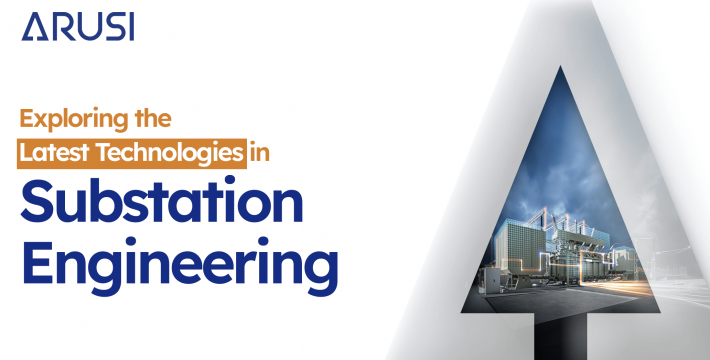
The backbone of any modern electrical grid is substations. They are responsible for manipulating voltage levels, protecting the system and distributing reliable power. But as power demands increase and grids become more complex, substation engineering has had to change to keep up. In this blog post, we’ll be discussing some of the most important technological trends that are shaping the future of substation engineering.
Intelligent Electronic Devices (IEDs)
One device that’s changing the game in substation automation is Intelligent Electronic Devices (IEDs). These gadgets combine multiple functions into one platform. You can use them for protection, control, monitoring and communication all at once. IEDs are built with advanced microprocessor tech that lets them integrate seamlessly with other parts of a substation as well as remote monitoring systems via communication protocols.
By streamlining operations, these devices minimize hardware redundancies and help data management efforts stay efficient. IEDs also boast self-diagnostic properties and real-time monitoring features that beef up predictive maintenance strategies too.
Digital Substation Automation Systems (DSAS)
Digital Substation Automation Systems (DSAS) have overhauled traditional copper wiring by replacing it with fiber optic networks capable of high-speed data transfers between different components of a substation. DSAS relies on the IEC 61850 standard to operate its communication protocols and data models so that devices from different manufacturers can work together without issues.
This switch also helps eliminate physical wirings which enhances flexibility while reducing installation costs and increasing system reliability. The centralized data management system brought about by DSAS also enables advanced analytics which can optimize performance and enable proactive maintenance strategies.
Cybersecurity and Substation Resilience
As substations become increasingly digitized and interconnected, ensuring robust cybersecurity measures is paramount to safeguarding critical infrastructure and maintaining grid resilience.
Sophisticated cyber threats, such as malware attacks, data breaches, and unauthorized access attempts, pose significant risks to substation operations and can potentially lead to widespread disruptions.
Environmental Sustainability and Green Substation Initiatives
The world is making noise about environmental sustainability and reducing carbon footprints. That’s why you might have noticed that substation engineering is center stage. It’s becoming the star of a greener, more eco-friendly power grid.
With technology and new practices, engineers are working to make substations less harmful to the environment. Additionally, they’re trying to enhance energy efficiency and squeeze in as many renewable energy sources as possible.
Virtual Reality (VR) and Augmented Reality (AR)
Virtual Reality (VR) Tech along with Augmented Reality (AR) tech empowers engineers to design better substations while keeping training safe for their operators and maintenance personnel. VR allows engineers to visualize virtual models so they can conduct thorough reviews, detect any problems and ensure construction safety before breaking ground.
Although VR doesn’t translate perfectly to the real world, it does minimize rework and increase efficiency when it comes time for actual construction. On the other hand, AR overlays digital information onto the physical world which is useful for technicians who need real-time guidance on complex tasks. Reducing errors helps them get their work done more safely.
Drone Technology
Drones have become a staple in substation engineering because they can access hard-to-reach areas without putting workers at risk. They can take detailed photos and videos of transmission line corridors and infrastructure so engineers can analyze them later.
By equipping drones with specialized sensors, they can also detect hotspots from afar, identify vegetation encroachments and assess potential structural defects without having someone physically inspect those areas themselves.
Advanced Asset Management Systems
Asset management systems are crucial for the proper functioning of a substation. They impact reliability, cost-effectiveness, and operational efficiency. By investing in these systems, you enable your team to leverage new technology like IoT sensors, big data analytics, and cloud computing.
All this modern tech gives you a detailed look at how well your substation is performing and its current condition. With that information in hand, predictive maintenance strategies become possible, which help make sure your assets don’t break down unexpectedly.
With data-driven decision making available to you by using advanced asset management systems, you can streamline future investments by prioritizing projects correctly. These systems also ensure regulatory compliance and resource allocation optimization.
As the world becomes more sustainable by relying on renewable energy sources as opposed to non-renewable ones, your substation must start to adopt smart inverters. Similarly valuable technologies include advanced power electronics and energy storage systems.
Control schemes need an overhaul too if they are going to handle the two-way flow of power that will become increasingly common in upcoming years. Doing so will help maintain grid synchronization and ensure that no outages happen.
There’s no doubt about it: Substation engineering services is changing for the better thanks to digitalization trends and constant improvements in AI technology. This tech makes substations more reliable, efficient, and safe than ever before.
To stay competitive while scaling up your business or utility company, engineers must be willing to learn about these emerging technologies as soon as possible. Doing so now means being able to navigate the complex challenges of future power systems with ease when they arrive.su
While taking advantage of these cutting-edge developments might seem easy on paper; however; researchers will have their hands full trying to solve cybersecurity concerns promptly as well as work through all the interoperability issues we’re expected to come across within this decade alone.


